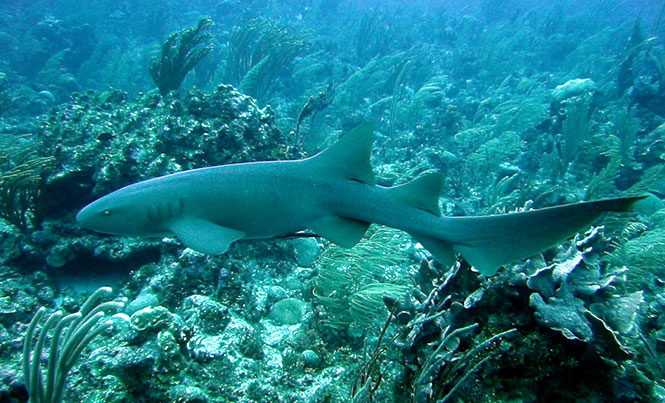
Learn more about this coastal shark that can be found in a variety of depths, from one meter or less to 130 meters
Nurse sharks are found in a variety of depths, from one meter or less down to 130 meters. This species seems to show fidelity to resting sites such as caves and crevices during the day and shows aggregation behavior in such sites. They are usually more active at night, although strong swimming in adults also occurs during the day. Nurse sharks are an opportunistic benthic predator feeding on small fish, octopus, shells, sea urchins, and crustaceans as their main prey items. Although their small mouth limits the size of prey items, these sharks have large throat cavities they use as a sort of bellows valve to suck in their prey with a short, violent influx of water.
Nurse sharks are not usually prized as market food, although they are harvested in parts of the Caribbean for their skin. Major threats include incidental and deliberate capture in coastal fisheries; spear fishing and capture for the ornamental fish trade; impacts on the coastal zone, particularly on reef areas which are its preferred habitats; increases in nutrient loading as a result of run-off after deforestation; and disturbance from tourism are all detrimental to this species’ shallow reef habitat. Particularly, studies have shown that the human pressures in coastal zones have led to a broad-scale absence of sharks on the Caribbean reefs, where shark populations have been reduced to a small fraction of their initial population within a few decades.
Although nurse sharks take up to six months to gestate a litter of pups, which is pretty quick for a shark, nurse sharks (as with any other species of shark and ray) are particularly vulnerable because it takes them a long time to grow and have only a few pups.